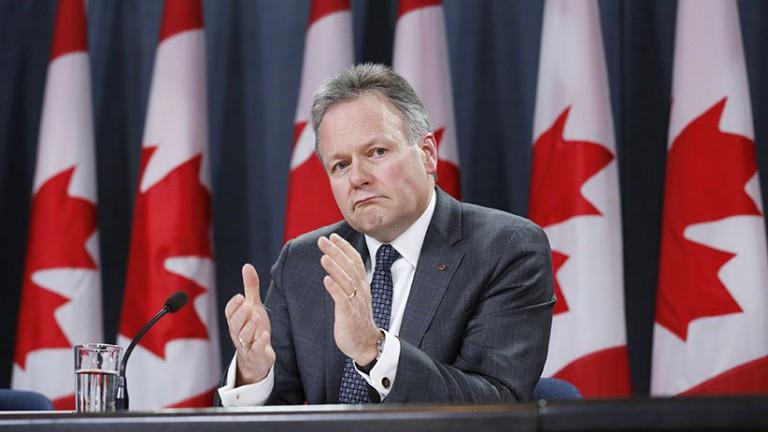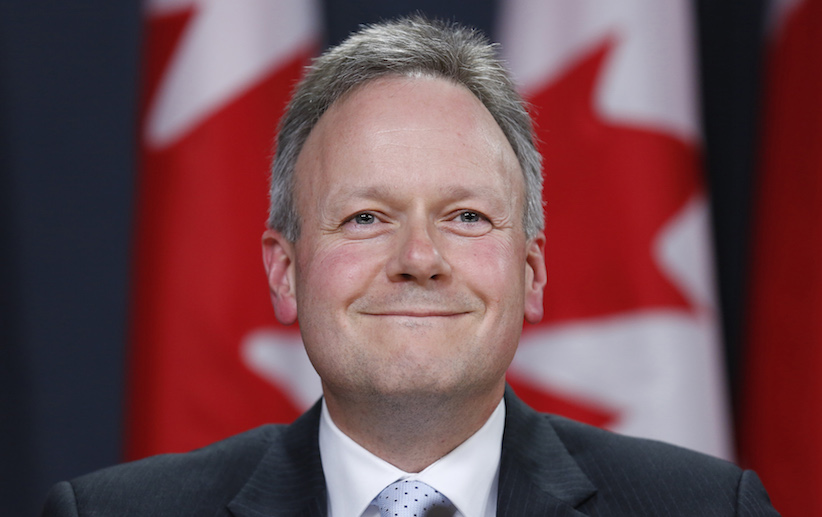Canada’s economy enters a ‘Goldilocks’ phase
Econ-o-metric: GDP growth slows to a sustainable rate. Not too hot, not too cold. It’s just right.

Bank of Canada Governor Stephen Poloz speaks during a news conference upon the release of the Monetary Policy Report in Ottawa January 22, 2014. Chris Wattie/Reuters
Share

Canada’s economy is slowing: growth now is only fast, instead of really fast.
The Bank of Canada’s autumn Business Outlook Survey, which asks executives to talk about their future prospects, was weaker overall than the previous quarterly report, but still decent by historical standards.
Why the Business Outlook Survey matters
The Bank of Canada leans heavily on its quarterly poll of executives, as the exercise offers a window into the thinking of the men and women who hire and fire. Responses to questions such as how current order books and sales inquiries compare with 12 months earlier have a strong correlation with the trajectory of economic growth.
Glass half full
Brian Porter, chief executive of Bank of Nova Scotia, told an audience in Washington on Oct. 13 that his domestic clients haven’t been this positive about the economy since 2006. The central bank appears to be hearing the same. “Prospects for the coming 12 months remain robust; a large majority of firms foresee a rise in sales volumes, with some further pickup in sales growth, suggesting that growth is becoming entrenched,” the Bank of Canada said in its assessment of the latest survey responses to the outlook survey.
One of the ways the central bank assesses the mood of business owners and managers is to ask them how things such as current orders compare with a year earlier. It then takes the percentage who report improvement and subtracts the percentage who report a deterioration to calculate a “balance of opinion.” In the autumn report, the balance of opinion was 55 per cent for future sales, compared with 59 per cent in the summer. A year ago, the number was 21 per cent.
As Porter said in Washington: “The Canadian economy continues to perform very well.”
Glass half empty
The strength of Canada’s economy in the months ahead will depend on investment and exports. The investment indicator in the Business Outlook Survey weakened significantly from the summer report, as the balance of opinion between firms planning more spending on machinery and equipment versus those predicting less dropped to 17 per cent from 29 per cent in the summer and 35 per cent at the start of the year. The Bank of Canada observed that investment intentions were “somewhat less widespread,” but still at a level closer to the historical average.
Hiring intentions also slipped; the balance of opinion on adding workers versus getting rid of them was 34 per cent compared with an off-the-charts 59 per cent in the previous quarter.
Something else to consider
Investment data these days may not be telling us as much as they used to.
Bank of Canada Governor Stephen Poloz discussed this issue with a few Canadian reporters at the annual meetings of the International Monetary Fund and World Bank in Washington over the weekend. For the most part, he was feeling good about investment. The second quarter GDP numbers showed that companies in most industries were spending, and imports of machinery and equipment—a proxy for investment—are strong.
Still, Poloz was unsure traditional indicators capture the nuances of modern business. Take cloud computing. Companies no longer need to buy computers, they simply lease space in the cloud from Amazon or another provider. That transaction likely would be recorded as an expense, but it has the same impact on the economy as an investment in hardware would have been previously. “Does GDP still get created by that company?” Poloz asked. “It looks like it. You can see it as GDP. It should give us a boost in productivity…It’s an extra complication that we are going to need to understand.”
Bottom line
Poloz’s observations on measuring investment are a reminder that these are unusual times, making predictions difficult.
Given the strength of the Canadian data, it would be easy to conclude that the central bank is set to raise interest rates at every opportunity for the next year or so. But that’s not likely to happen. Poloz repeated on the weekend that he thinks this period of strong economic growth is likely forcing companies to add workers and invest in operations to keep up with demand. Those investments actually allow the central bank to take its time raising interest rates, because those new workers and additional productive capacity will offset inflation pressures.
“It’s one of the things I’m often puzzled about, is how many folks are writing about how inflation’s been missing in action and all that,” Poloz said. “Well, that’s exactly what happens at this stage of the cycle. It’s pushed out further and that’s a good thing.”
Canada’s economy was due to slow from its torrid pace at the start of the year, and that’s what is happening. The renegotiation of the North American Free Trade Agreement is an important headwind that will cause executives pause over the months ahead. Otherwise, the economy appears to have entered a Goldilocks phase: not too hot, not too cold.